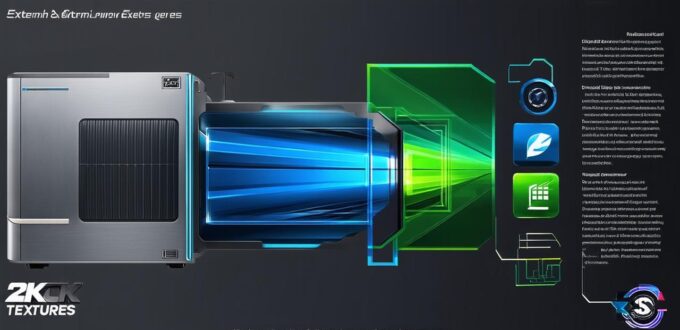
Computer software is a critical component of modern technology that enables users to perform a wide range of tasks. It is developed by software developers who use various programming languages and tools to create applications, systems, and other software products. However, not all software components are equally important or useful, and some may be unnecessary or even harmful.
In this article, we will explore the main components of computer software and their functions. We will also discuss how these components interact with each other to create a functional software system. By understanding the different parts of computer software, you can become a more effective software developer and create better software products.
1. Programming Language
Programming language is the primary tool used by software developers to write code that instructs the computer to perform specific tasks. There are many programming languages available, each with its unique syntax and features. Some of the most popular programming languages include Java, Python, C++, and JavaScript.
Programming languages are used to define algorithms, data structures, and other components that make up a software system. Developers use different programming languages for different tasks, depending on the requirements of the application they are building. For example, Java is often used for enterprise applications, while Python is popular for scientific computing and data analysis.
1. Operating System
An operating system (OS) is the software that manages the computer’s hardware and provides a platform for running other software applications. The OS interacts with the hardware components of the computer, such as the CPU, memory, and input/output devices, to perform tasks such as managing files, allocating memory, and controlling access to the hardware.
Some popular operating systems include Windows, macOS, Linux, and Android. Each OS has its unique features and capabilities, which can affect the performance and functionality of software applications. For example, some software may run faster or more efficiently on one OS than another.
1. Libraries and Frameworks
Libraries and frameworks are pre-written code that developers can use to simplify their development process and speed up the creation of software products. Libraries provide a set of commonly used functions and tools, such as data structures and algorithms, that developers can incorporate into their code. Frameworks, on the other hand, provide a complete system for developing software applications, including UI components, database access, and networking capabilities.
Libraries and frameworks are essential tools for software development, as they enable developers to focus on the unique aspects of their application rather than writing boilerplate code. Some popular libraries and frameworks include React, Angular, Django, and Spring.
1. Data Structures and Algorithms
Data structures and algorithms are essential components of computer software that enable developers to organize and manipulate data in a structured way. Data structures provide a way to represent data in memory, while algorithms provide a set of instructions for performing operations on that data.
There are many different types of data structures and algorithms, each with its unique strengths and weaknesses. Some common data structures include arrays, linked lists, stacks, queues, trees, and graphs. Algorithms include sorting, searching, and graph traversal algorithms.
Data structures and algorithms are critical components of software development, as they enable developers to create efficient and scalable software systems. Developers must understand how to use data structures and algorithms correctly to ensure that their applications run efficiently and meet the performance requirements of users.
1. User Interface (UI)
The user interface (UI) is the component of computer software that enables users to interact with the application. The UI provides a graphical or visual representation of the application, including buttons, menus, icons, and other graphical elements.
Developers must create an intuitive and user-friendly UI that allows users to perform tasks easily and efficiently. A well-designed UI can enhance user experience and increase the likelihood that users will continue to use the application.
1. Database
The database is a critical component of computer software that enables developers to store and retrieve data. The database provides a structured way to organize and manage data, which can be accessed and manipulated by other components of the software system.
There are many different types of databases, including relational databases, NoSQL databases, and object-oriented databases. Each type of database has its unique strengths and weaknesses, which can affect the performance and scalability of software systems. Developers must understand how to design and implement a database that meets the requirements of their application.
